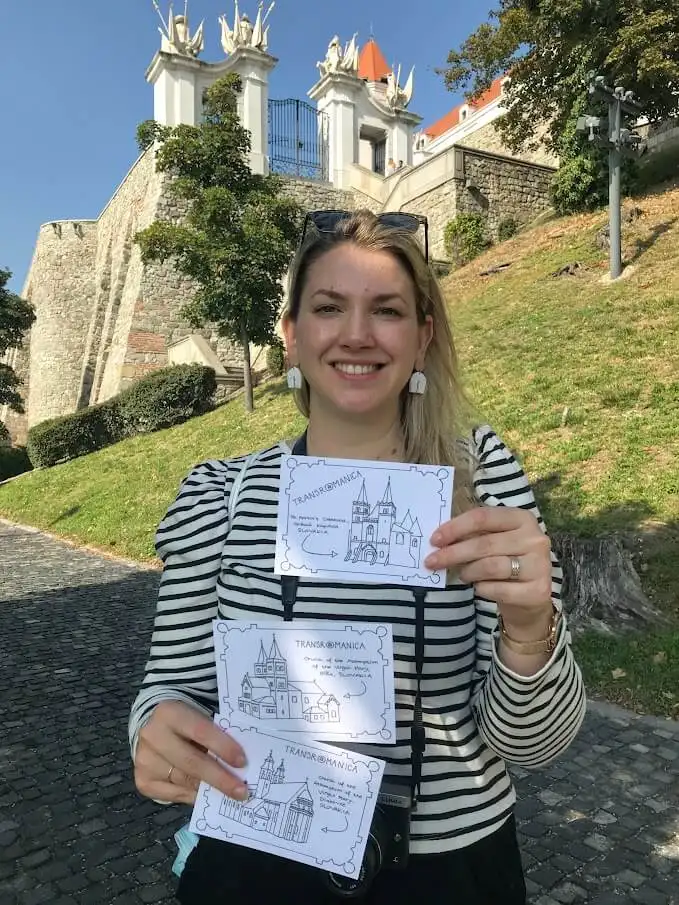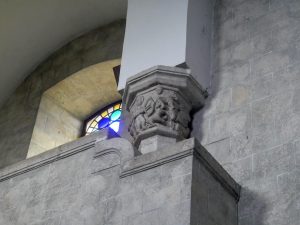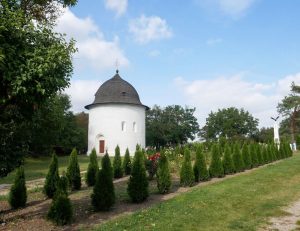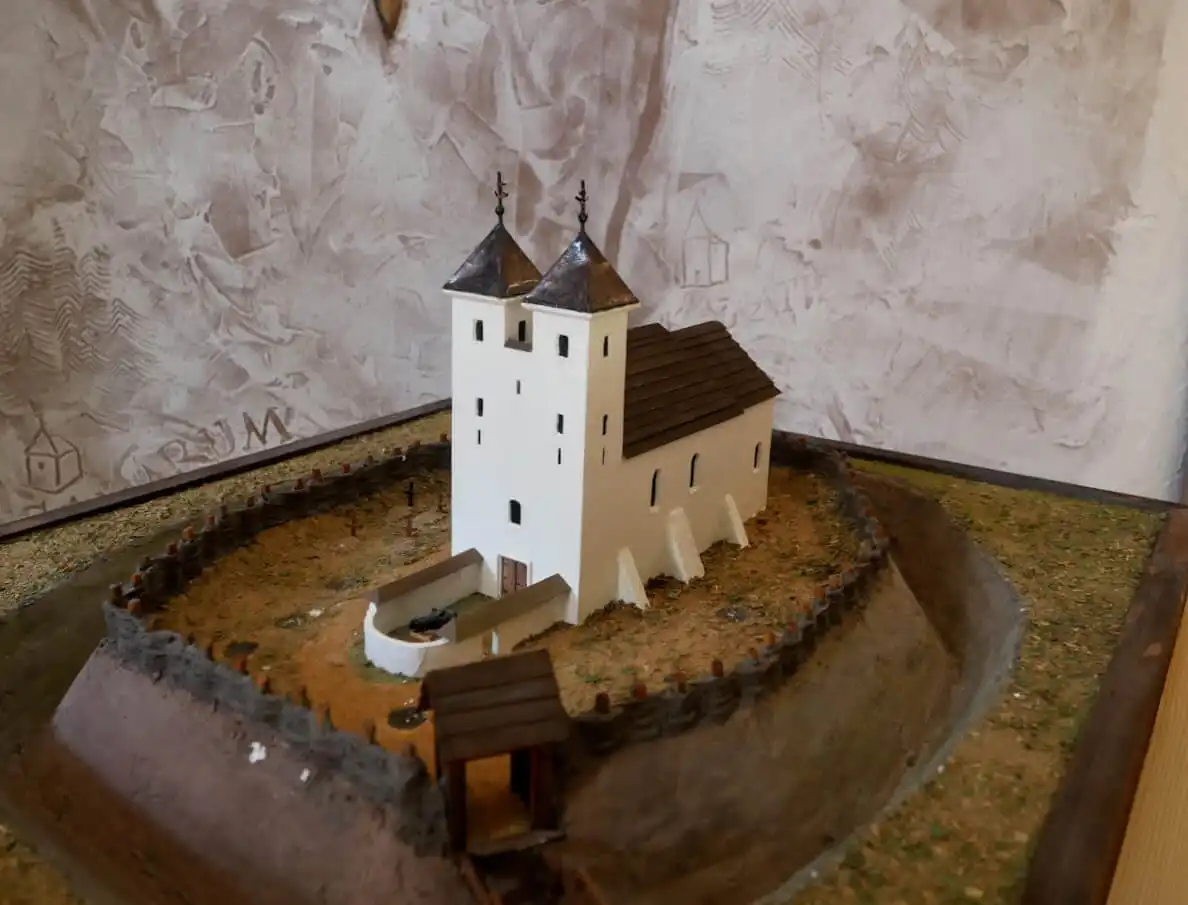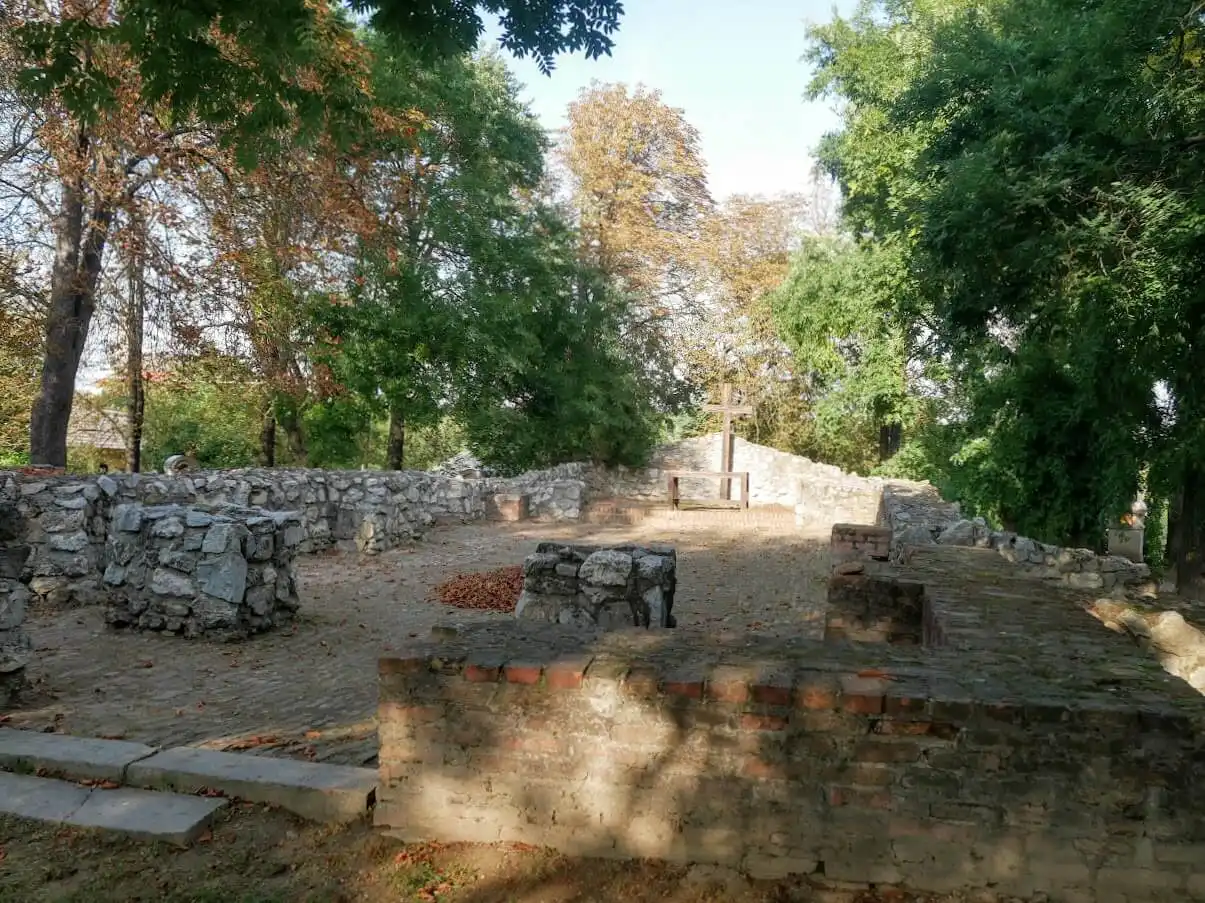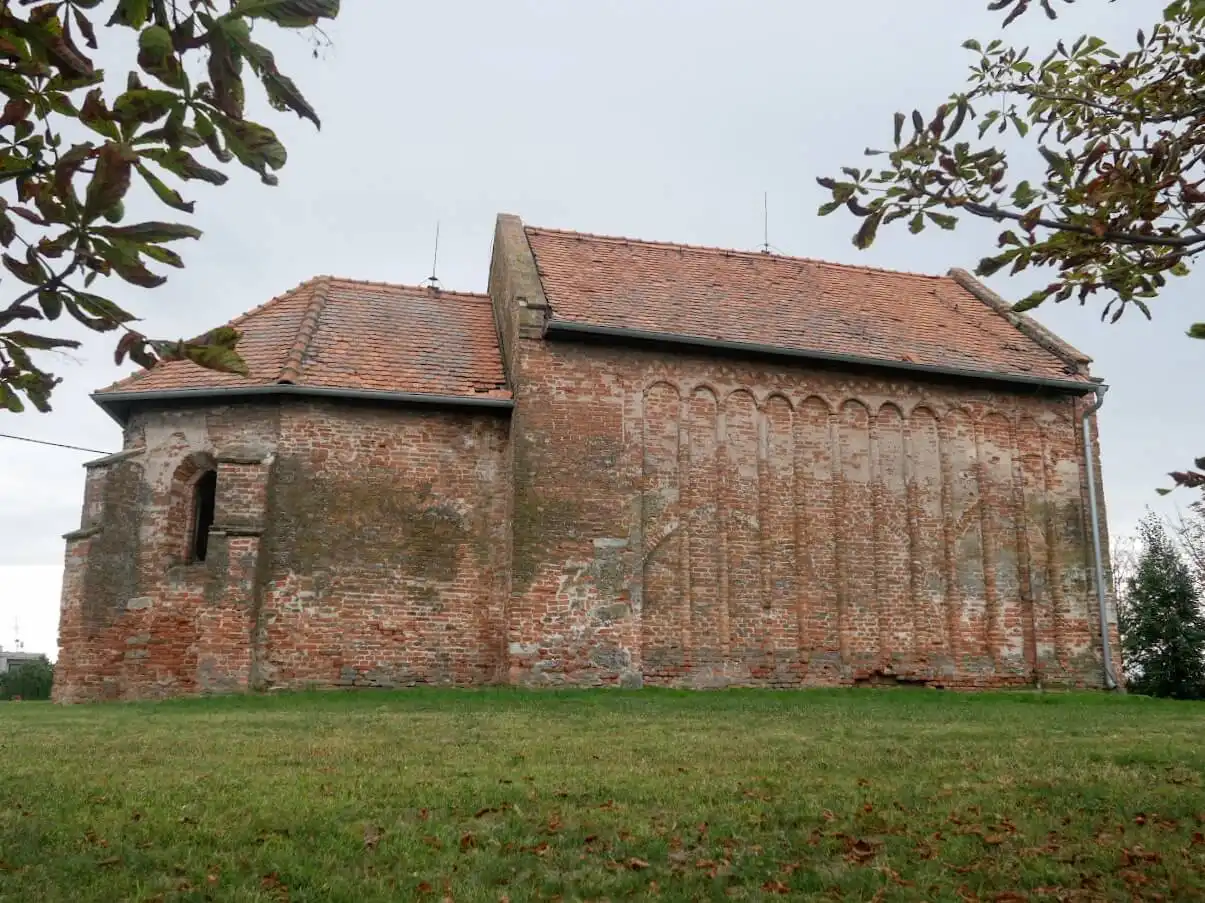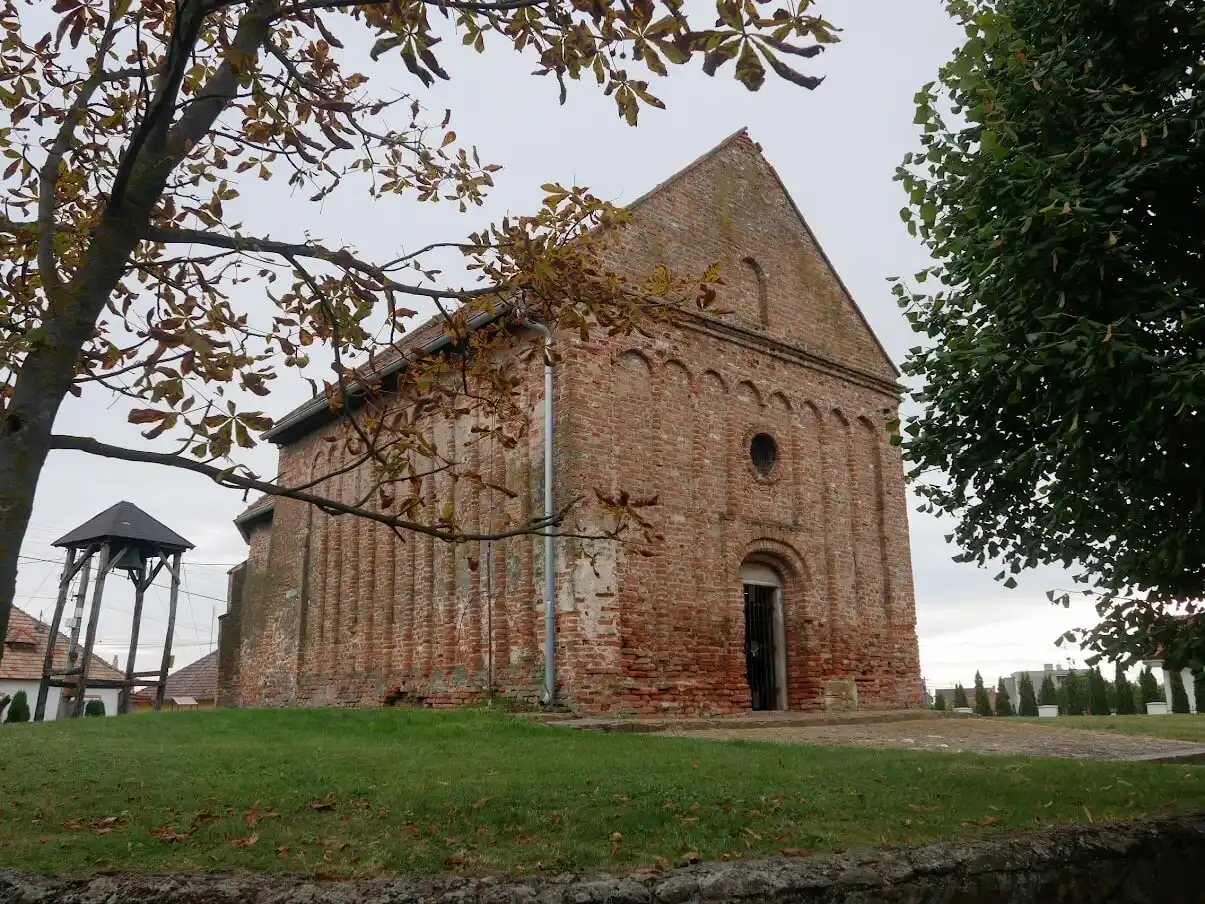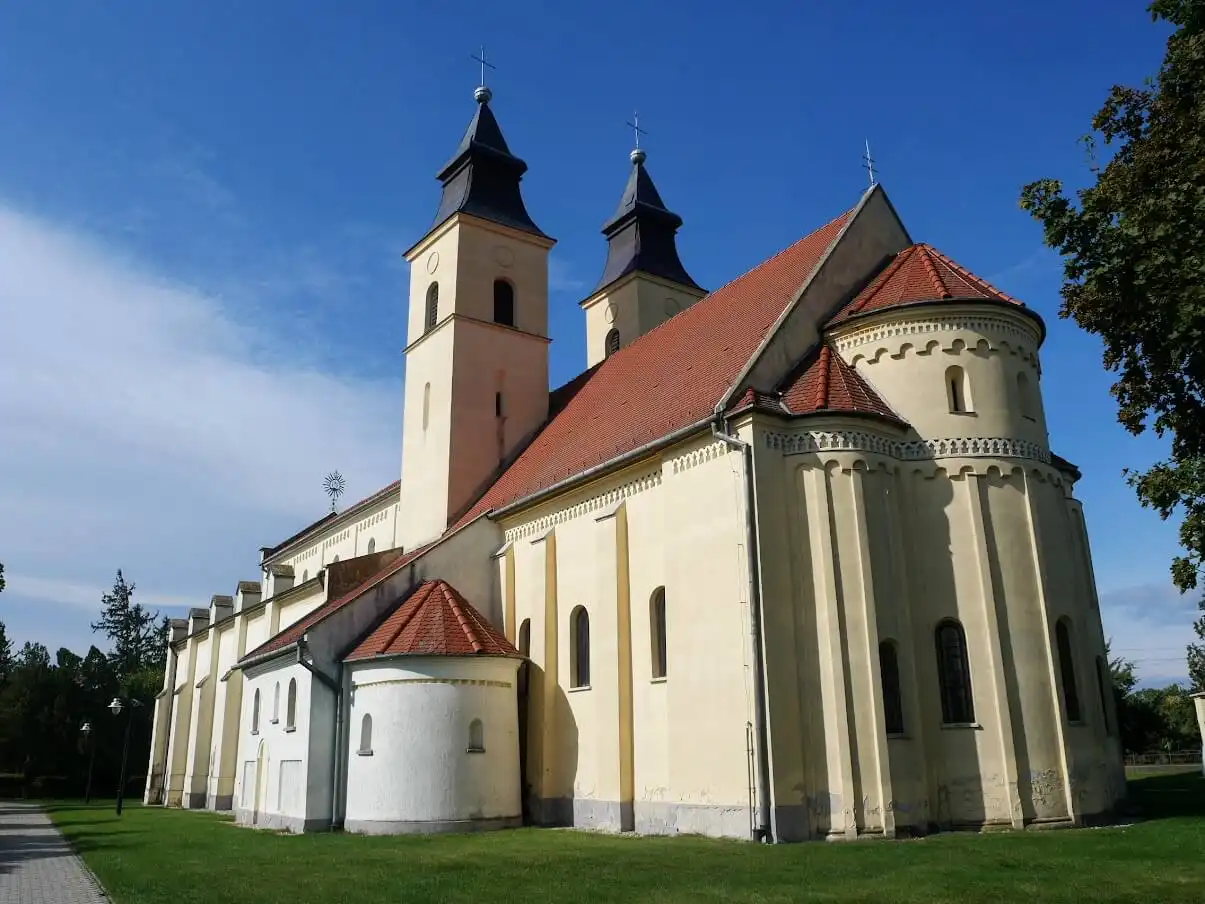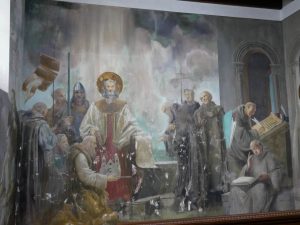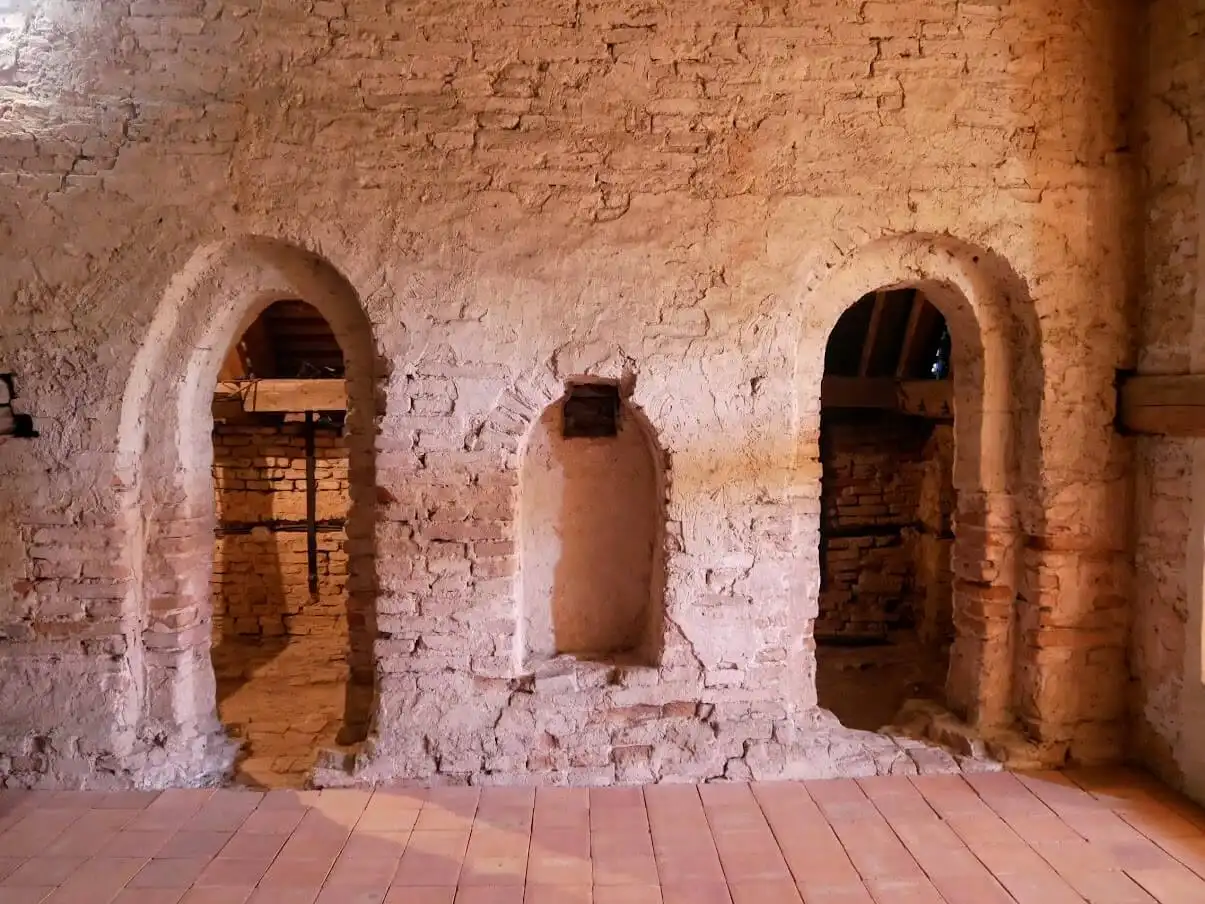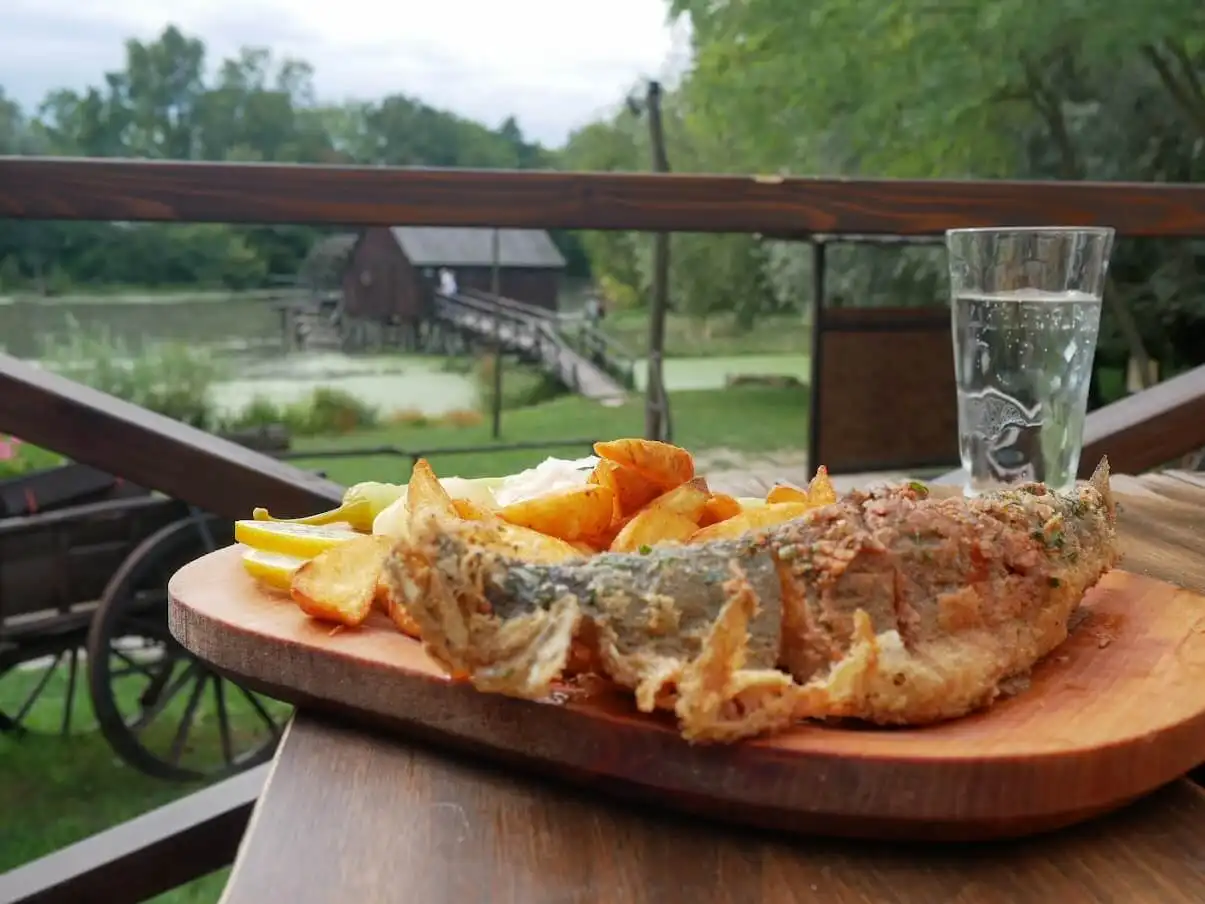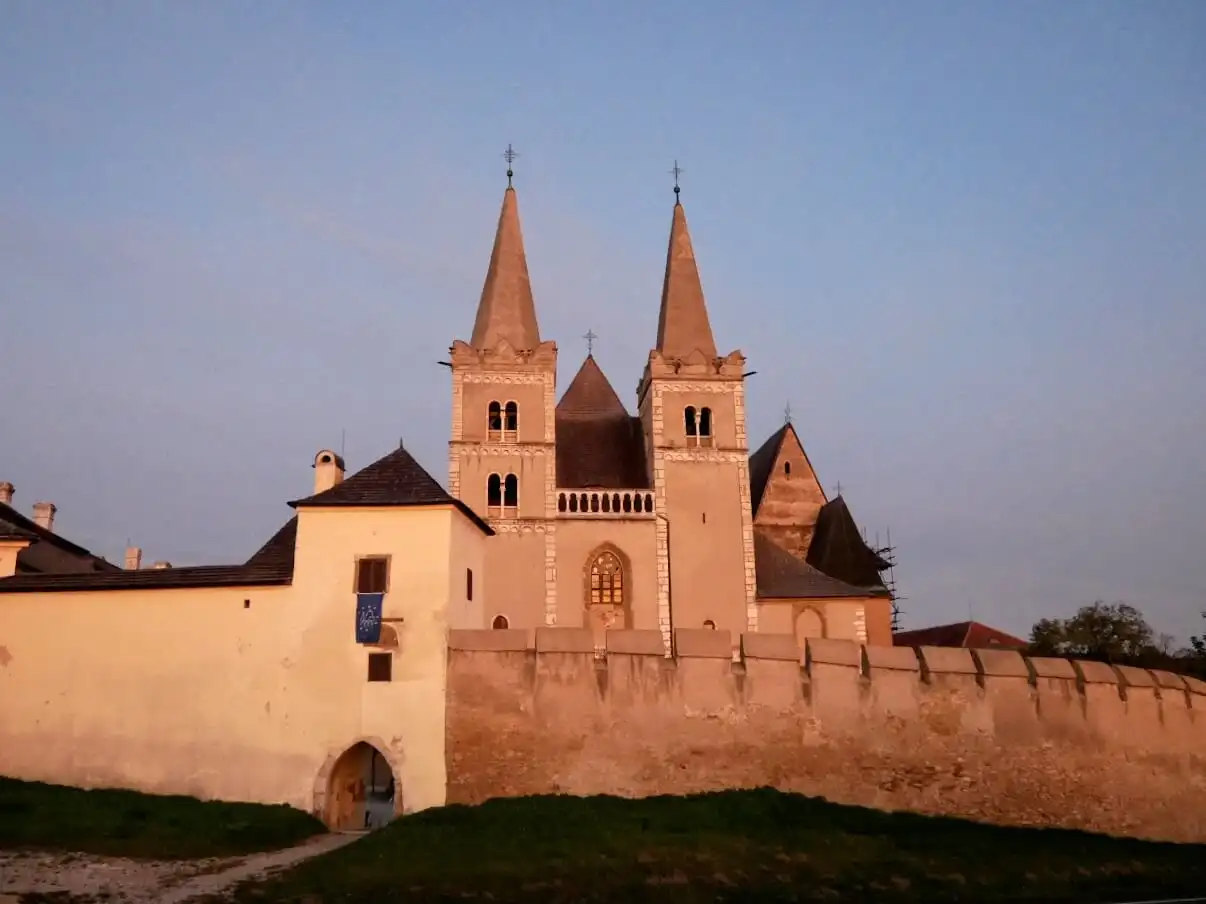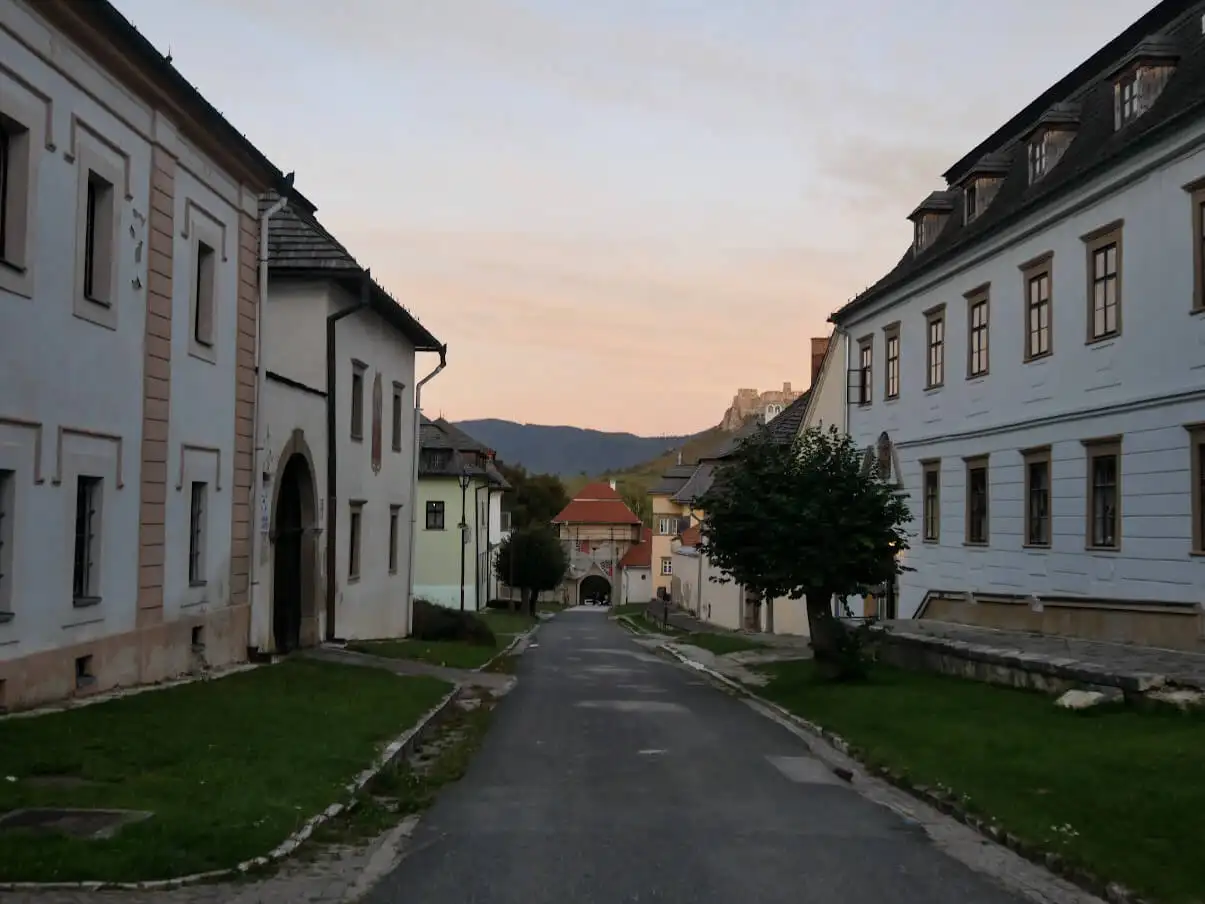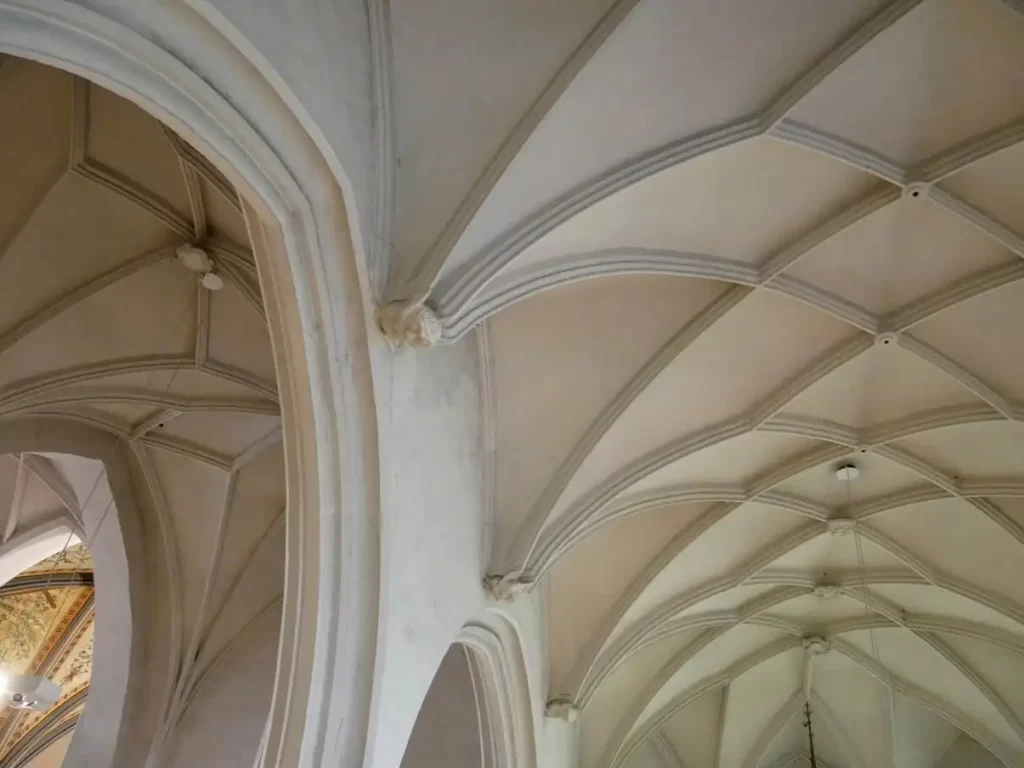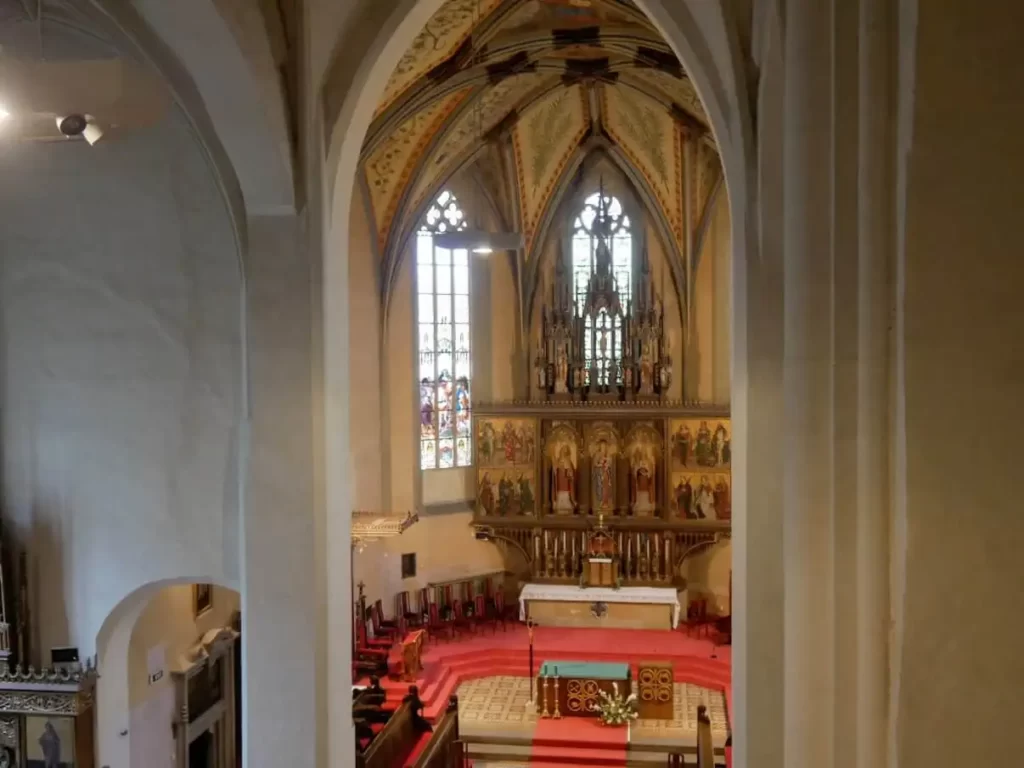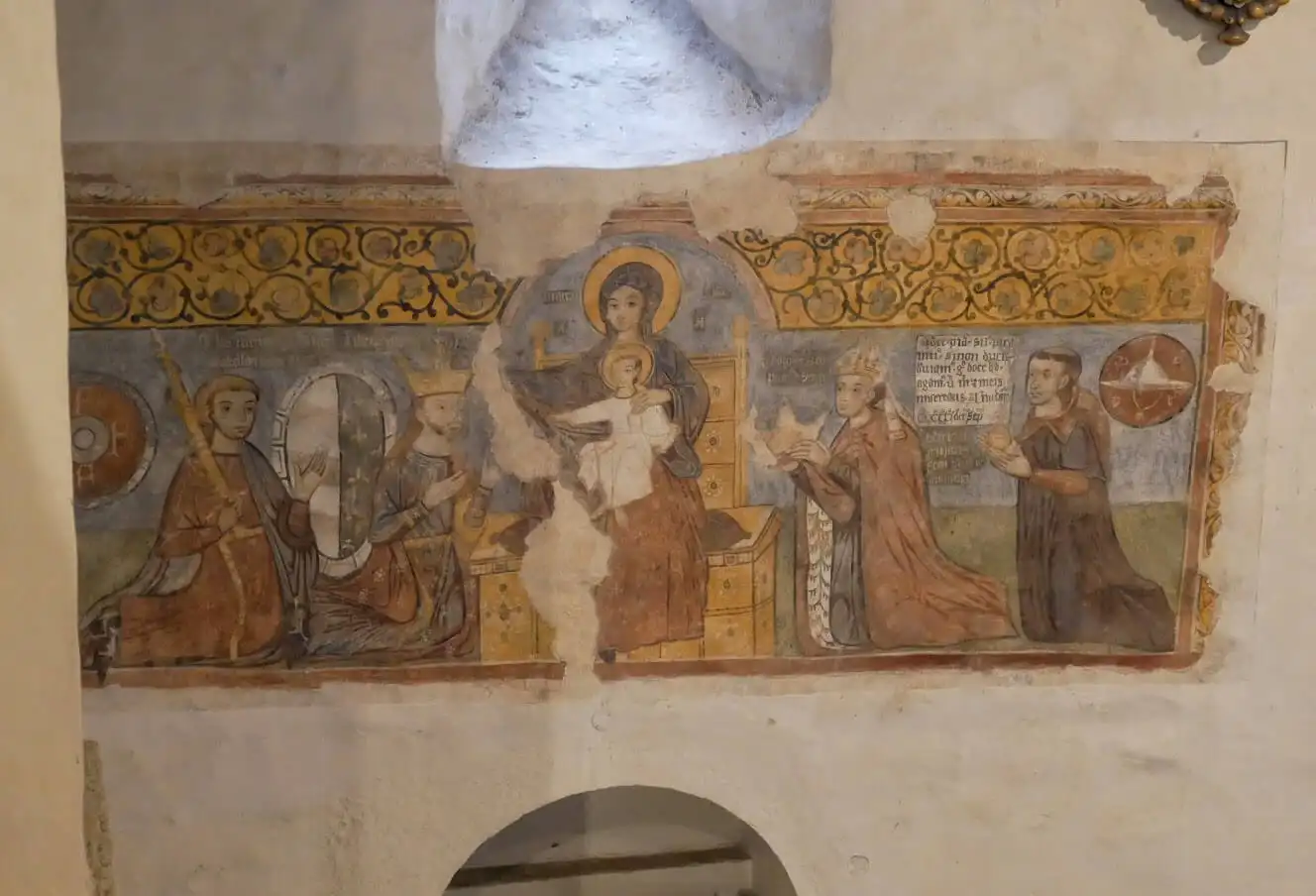Transromanica is the Cultural Route of the Council of Europe, spanning through nine countries and including more than fifty sites. Last week I visited one of its member countries, Slovakia, and explored some beautiful medieval sites there. Exploring them felt like travelling back through time. Here is my travel journal in which you can read more about it.
Exploring the Transromanica sites in Slovakia
People were travelling throughout the centuries, and one of the first travellers were pilgrims. They were embarking on journeys over Europe on a quest to visit some of the sacred medieval sites.
⤷ Read more: History of travelling
The Transromanica route highlights those unique places and inspires travellers to visit some of them. By providing more info about them, they also encourage travellers to learn about the joined European heritage.
However, not only the pilgrims were travelling during the Middle Ages, but also builders and stonemasons. The same workers would often work on several churches. That’s why we can find similar features on them. That connected European heritage, created centuries before the EU was founded, is something Transromanica, as one of the Cultural Routes of the Council of Europe, is trying to highlight.
All the sites on the route have Romanesque architectural elements and were built between 1000 and 1300. However, numerous of them were rebuilt several times afterwards, so some other styles are featured on them, as well.
Watch my video about the TRANSROMANICA sites in Slovakia below:
Transromanica sites in Slovakia
This was my first time in Slovakia, and before my visit, I heard only of Spiš Castle as an art history student. I knew nothing about the beautiful Tatra Mountains and mountain landscape one is enjoying while travelling around Slovakia. I also didn’t know much about the numerous beautiful castles that country is home to. Or that its capital Bratislava looks like a more charming smaller version of Vienna.
But let’s start from the beginning. In my search for the medieval treasures, my plan was to visit three Transromanica sites Slovakia is home to: Bíňa, Diakovce and Spišská Kapitula. I travelled from the Croatian capital Zagreb by car and explored Slovakia that way, too.
I entered Slovakia in quite a symbolic way by crossing the Danube River next to the Hungarian town of Esztergom. It was a seat of power back in the Middle Ages and where the archbishopric was. It was from where church influences were coming to Slovakia back in the Middle Ages. The builders from Esztergom were involved in building some of those Romanesque churches in Slovakia, too.
I can’t remember when was the last time some country surprised me the way Slovakia did. From the moment we crossed the border, we immediately got lost in its vast fields. While driving through them, we were surrounded by the massive fields of wheat, sunflowers and other plants.
Bíňa
I started my search for the Transromanica sites in Slovakia at Bíňa. It’s a small village located some twenty minutes away from Esztergom and the border with Hungary.
In that southern part of Slovakia majority of people speaks Hungarian. And the region was, like the rest of the country, a part of the Hungarian Kingdom during the Middle Ages when those Transromanica sites in Slovakia were built.
Although a small village today, Bíňa was quite an important place during the Middle Ages. Back in the 13th century, the noble family Hont-Pázmány founded a monastery there. It survived the Turkish invasion, but sadly, it was destroyed in the 17th century by the Polish troops and an explosion in the Second World War.
The Church of the Assumption of the Virgin Mary and the small Rotunda dedicated to the Twelve Apostles are everything left from it.
We arrived in the village just around lunchtime and were surrounded by the smell of boiled paprika and tomatoes. Although churches could belong to France or Germany with their architecture, the scent around us belonged to some delicious comfort food of Slovakia.
Our guide there was Anna Tuhárska from the Monuments Board of Slovakia, who showed us all the smallest details on those buildings. It always makes a difference to have someone show you around when travelling, explaining the significance of those places and answering all of your questions.
⤷ TIP: Guided tours are organised on some of those sites. Check out the Transromanica website for more info.
Although glorious and beautiful from the outside, these two buildings are home to some real medieval treasures. The Rotunda was painted during the Middle Ages. Some rare Romanesque wall paintings probably depicting twelve apostles could still be found there.
Inside the church, some fantastic medieval stone capitals and decoration is located. The most interesting are the Atlant (or a praying man with raised hands), capitals with the packing birds and hunting scenes.
Visiting these kinds of sites, located a bit outside the large cities and out of the sight of many tourists, gives you a different perspective of the country you’re visiting. I loved having small conversations with locals and sensing their love for those important buildings treasuring a part of their cultural heritage. But also a part of their identities.
⤷ Read more: 21 most beautiful castles in Europe
Svodín
After visiting Bíňa, we drove in the direction of the north towards our next location. The road went through the vast fields, and with its zig zag direction, it felt like an old medieval path. These roads between the villages are not busy and could be well explored from a sit of your bicycle. Cycling routes are well marked, so it’s definitely a good idea to explore the region that way.
On our way to the hotel, we made a quick stop at the village of Svodín. It’s home to the remains of the Romanesque church of Saint Michael. Although today at the archaeological stage, you can get a pretty good idea of how it looked like when visiting a small Archaeological museum located just across the street from it. There is a church model, together with the archaeological findings from the site exhibited inside of it.
Just next to the small museum is an old peasant house that could be visited and in which you’ll get an idea of how life in the area looked like. It’s a lovely stop to make while visiting those Transromanica sites in Slovakia.
⤷ Read more: 20 Archaeological sites you have to visit in Europe
Čierny Brod
We spent the night at a lovely small Pension Wien located in Čierny Brod. We chose it because it also has a restaurant, so we could have a nice dinner at it. Sometimes it’s a bit of an issue to find restaurants in those small remote villages. So, having a hotel like this one comes in handy. And I especially loved their meals named after the Austrian empresses.
Although we didn’t know that when booking a hotel, Čierny Brod is also where a fascinating Romanesque church dedicated to the Birth of the Virgin Mary is located. It was made of bricks and under Italian influences. Those influences were probably conveyed by the Benedictine monks coming from Italy.
The church is not in use anymore and needs restoration. But, probably that a bit tumbledown appearance gives it some magical feel. Located on a small hill at the centre of the village, it looks as it didn’t change for centuries. And that generations of people living there always finding it as a comforting symbol of home.
⤷ Read more: The most interesting European myths and legends
Diakovce
Our search for the Transromanica sites in Slovakia took us to Diakovce next. We were still in southern Slovakia and drove mostly through the flatland and massive fields. It was pretty windy the next day, and we learned it’s something pretty common in that part of the country.
The Church of the Assumption of the Virgin Mary is a monumental Romanesque building, also rebuilt later in history.
A small chapel inside of it is the oldest part of the church. Although the wall paintings were created much later, in the second half of the 19th century, they gave it a certain historical feel. Its original medieval architecture could be seen in a part of the sanctuary.
However, its most fascinating part is above the church, where the remains of an old Benedictine monastery is. It was used by the travelling monks, who would come there to monitor the field work. Seeing the small cells in which they slept or the niches where they would sit to pray made this place come to life.
It was these kinds of stories and places on the Transromanica route that made them so magical. Imagining people building those churches, treasuring important books and documents at its archives or building the walls around them to protect them from invaders suddenly made these buildings much more than the pieces of architecture. They became the cultural spots, places where art and heritage weren’t only cherished but also created.
⤷ TIP: Close to Diakovce is the village called Tomášikovo. We went there to see an old watermill and lunch at a restaurant Malom Csárda just next to it. It’s a lovely peaceful place with some delicious local food. So, I’m highly recommending it for a visit while exploring some of these Transromanica sites in Slovakia.
Spišská Kapitula
After a lovely lunch next to the Little Danube River, we continued our journey by travelling to the country’s northwest. The scenery started changing quickly. Soon, there were no sunflower fields around us anymore. We were surrounded by the high forests and drove through the mountains now.
Our next stop was Spišská Kapitula, home to the marvellous Saint Martin’s Cathedral. While approaching it, we could spot the cathedral towers and the Spiš Castle, located on a neighbouring hill, from kilometres away. It gave me the sense of how must have felt arriving at it back in the Middle Ages. Seeing the cathedral towers proudly standing between the hills made them look even more heavenly to those early travellers.
We arrived at Spišská Kapitula in the dusk, just in time to enjoy a beautiful sunset from it. Spišská Kapitula is a historic town that belonged to the church back in the day. Surrounded by solid walls, even today, you enter the place through one of its city gates. Besides the cathedral, it’s also home to the bishop’s palace, canonical houses, and other institutions.
Our hotel, Penzion St. Martin, was located in one of those historic canonical houses. Staying in that tranquil place overnight felt as we became a part of history. Almost as we were pilgrims travelling from a far land to visit that special place. And in a way, we were.
The following morning we strolled up the cobbled streets of Spišská Kapitula. We met the city archivist Monika Bizoňová in front of the Saint Martin’s Cathedral. It was, without doubt, my favourite of all the Transromanica sites in Slovakia.
Stepping into that old church immediately transferred me back to the Middle Ages. From its numerous beautiful altars, stained glass windows to the Romanesque decoration on its capitals, Saint Martin’s Cathedral is the medieval art treasure. Each time I thought it couldn’t get any better, Monika would show us something else, and I would be completely mind blown.
⤷ Read more: One day itinerary in Slovakia
An old Cathedral’s library and the archive were probably my two favourite places. They are witnessing about the churches not only serving as religious places throughout history. Even more importantly, they were the treasures of knowledge and culture.
And that’s why these European Cultural Routes, like Transromanica, are so important. To show us how in Europe we share that same culture. But what makes it so fantastic are the regional differences we have in language, religion, architectural details, food etc.
⤷ Read more: Best exhibitions in European museums in autumn and winter 2021
Tips for exploring the Transromanica sites in Slovakia
⤷ Rent a car – Some of these Transromanica sites in Slovakia are located in villages and rural areas. That’s why a good plan is to visit by or rent a car and explore them that way.
⤷ Check out the Transromanica website for the contacts – My advice is to check Transromanica’s website and get in touch with the contact persons on each site before your trip. Often those churches are closed, so you’ll need someone to open them for you. Here are the contacts for Bíňa, Diakovce and Spišská Kapitula.
⤷ Visit Transromanica’s website – For more info about those sites and the route, visit Transromanica’s website or check out the Transromanica’s Travel Magazine.
I visited Transromanica sites in Slovakia on a press trip organised by Transromanica and their partners in Slovakia. Many thanks to all of them for organising such a wonderful trip for me. And for introducing me to the magical world of medieval Slovakia.


